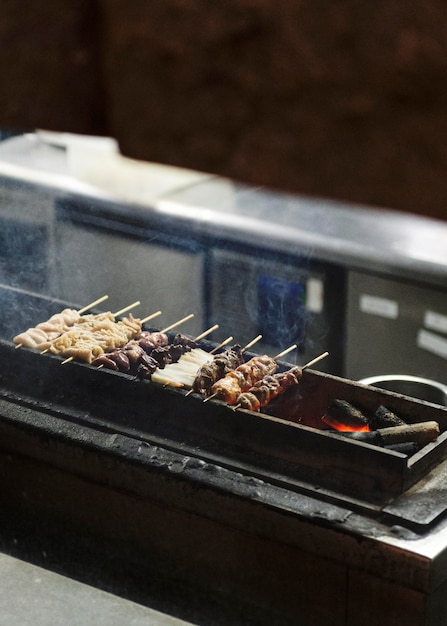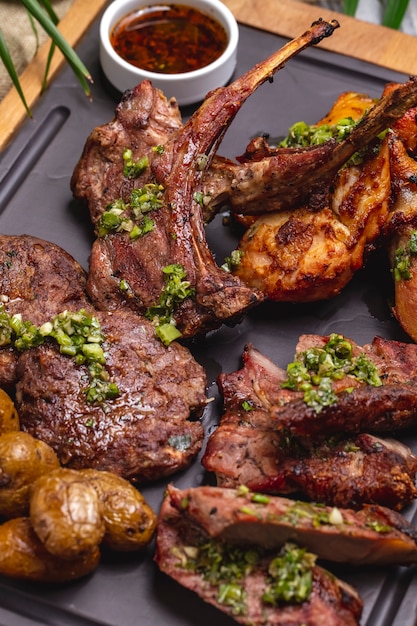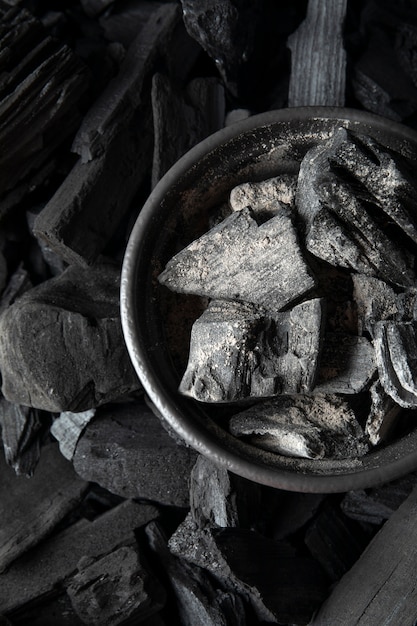What are the 4 styles of BBQ?
Barbecue, or BBQ for short, is a popular cooking method that involves slow-cooking meat over an open flame or hot coals. While BBQ is enjoyed all over the world, different regions have developed their own unique styles and flavors. In the United Kingdom, there are four main styles of BBQ that stand out: Texas-style, Kansas City-style, Carolina-style, and Memphis-style.
Texas-style BBQ
Texas-style BBQ is known for its emphasis on beef, particularly brisket. The meat is seasoned with a simple rub of salt, pepper, and sometimes other spices, then smoked low and slow over hardwood. This style of BBQ is typically served without sauce, allowing the smoky flavors of the meat to take center stage.
Kansas City-style BBQ
Kansas City-style BBQ is all about the sauce. The meat, which can include pork ribs, beef, and chicken, is slow-cooked until tender and then slathered in a tangy, sweet, and slightly spicy tomato-based sauce. This style of BBQ is often served with a side of coleslaw and baked beans, creating a delicious combination of flavors.
Carolina-style BBQ
Carolina-style BBQ is divided into two distinct styles: Eastern Carolina and Western Carolina. Both styles focus on pork, but they differ in the type of sauce used.
Eastern Carolina BBQ features a vinegar-based sauce with a touch of heat. The meat, usually whole hog or pork shoulder, is cooked slowly and then pulled apart into tender shreds. The vinegar sauce adds a tangy and slightly acidic flavor that cuts through the richness of the meat.
Western Carolina BBQ, on the other hand, uses a tomato-based sauce that is sweet and tangy. In addition to pork, this style of BBQ also incorporates smoked chicken and beef. The meat is often served chopped or sliced, and the sauce adds a delightful balance of flavors.
Memphis-style BBQ
Memphis-style BBQ is known for its dry rubs and slow-cooked meats. The dry rub, which consists of a blend of spices such as paprika, garlic powder, and onion powder, is generously applied to the meat before smoking. Unlike other styles, Memphis-style BBQ is typically served without sauce, allowing the flavors of the meat and rub to shine through. However, if you do prefer sauce, Memphis-style BBQ also offers a tangy tomato-based option.
“BBQ is not just about grilling a piece of meat; it’s a way of life.”
In conclusion, the four styles of BBQ in the UK – Texas-style, Kansas City-style, Carolina-style, and Memphis-style – each have their own distinct flavors and traditions. From the smoky simplicity of Texas-style to the saucy goodness of Kansas City-style, there’s a BBQ style to suit every taste. So whether you’re a fan of tender brisket, tangy pulled pork, or juicy ribs, make sure to explore the delicious world of BBQ and find your own favorite style.
What is the 3 2 1 rule BBQ?
When it comes to barbecuing, the 3 2 1 rule is a popular cooking technique that many pitmasters swear by. This method is primarily used for smoking ribs and involves three distinct stages of cooking: smoking, wrapping, and glazing.
Stage 1: Smoking
During the first stage, you’ll want to smoke your ribs at a low and consistent temperature. The general rule is to maintain a temperature of around 225°F (107°C) for approximately three hours. This slow and steady cooking allows the ribs to absorb the smokey flavors and develop a mouthwatering crust.
Stage 2: Wrapping
After the smoking phase, it’s time to wrap your ribs to help tenderize and infuse additional flavors. You’ll need to tightly wrap your ribs in aluminum foil along with a bit of liquid, such as apple juice or beer. This helps create a steamy environment that aids in breaking down the connective tissues, resulting in tender and juicy ribs. Cook the wrapped ribs for around two hours at the same temperature.
Stage 3: Glazing
The final stage of the 3 2 1 rule is all about adding a mouthwatering glaze to your ribs. Once unwrapped, generously brush your ribs with your favorite BBQ sauce or glaze. Return the ribs to the grill for around one hour, allowing the glaze to caramelize and create a delicious sticky coating.
Pro tip: For extra flavor, consider sprinkling some dry rub on your ribs before the smoking phase. This will add an additional layer of seasoning.
Using the 3 2 1 rule ensures that your ribs are perfectly cooked, tender, and packed with flavor. It’s a tried and tested method that guarantees barbecue success.
“The 3 2 1 rule is a foolproof way of achieving mouthwatering ribs every time. Give it a try and impress your friends and family at your next BBQ gathering!” – BBQ enthusiast
What is the 2 2 1 BBQ Method?
When it comes to barbecue, everyone has their own techniques and methods for achieving the perfect smoked flavor. One popular method that has gained traction in recent years is the 2 2 1 BBQ method.
The Basics
The 2 2 1 BBQ method is commonly used when smoking ribs. It involves three stages of cooking: smoking, wrapping, and glazing. The numbers in the method refer to the amount of time each stage should take.
- Smoking (2 hours): During this initial stage, the ribs are placed directly on the grill or smoker. A combination of heat and smoke infuses the meat with flavor and begins the cooking process.
- Wrapping (2 hours): After the smoking stage, the ribs are wrapped tightly in foil to help lock in moisture. This step allows the meat to become more tender and helps enhance its flavor.
- Glazing (1 hour): In the final stage, the foil is removed, and the ribs are brushed with barbecue sauce or any glaze of your choice. This step caramelizes the sauce and creates a sticky, finger-licking coating on the ribs.
Why Choose the 2 2 1 BBQ Method?
The 2 2 1 BBQ method is a foolproof way to achieve juicy and tender ribs with a nice caramelized exterior.
Many barbecue enthusiasts swear by the 2 2 1 method because it produces consistently delicious results. By breaking down the cooking process into distinct stages, it allows for better control over the flavors and textures. The initial smoking stage imparts a smoky taste to the meat, while the wrapping stage helps retain moisture, resulting in succulent ribs. Finally, the glazing stage adds a sticky and flavorful coating that enhances the overall eating experience.
Remember that with any barbecue method, it’s essential to monitor the temperature of your smoker or grill to ensure even cooking. Additionally, every pitmaster has their own preferences and techniques, so feel free to customize the 2 2 1 method to suit your taste.
So, next time you fire up your barbecue, give the 2 2 1 BBQ method a try. You might just discover a new favorite way to cook mouthwatering ribs that will have your family and friends asking for seconds!
What is the Best Meat to BBQ Low and Slow?
When it comes to barbecuing, low and slow cooking is a popular technique that yields deliciously tender and flavorful meat. While there are many cuts of meat that can be cooked in this manner, some are better suited than others for achieving the perfect BBQ experience.
1. Brisket
In the world of BBQ, brisket is often considered the king of low and slow cooking. This cut of beef comes from the breast section and is known for its rich flavor and melt-in-your-mouth texture when cooked slowly over indirect heat. It’s important to choose a well-marbled piece of brisket for the best results.
2. Pork Shoulder
Pork shoulder, also known as pork butt or Boston butt, is another excellent choice for low and slow BBQ. This cut is packed with fat and collagen, which break down during the long cooking process, resulting in succulent and tender meat. Pork shoulder is commonly used to make pulled pork, a classic BBQ dish.
3. Ribs
Ribs, whether beef or pork, are fantastic for low and slow BBQ. The slow cooking process allows the connective tissues in the ribs to break down, resulting in tender meat that easily falls off the bone. Baby back ribs and spare ribs are both great options, offering different textures and flavors.
While these three meats are among the best for low and slow BBQ, there are certainly other cuts that can also yield delicious results. For example, beef chuck roast, lamb shoulder, and even whole chickens can be cooked low and slow to perfection.
“Low and slow cooking allows the flavors to develop and the meat to become incredibly tender.” – BBQ enthusiast
When it comes to seasoning your chosen cut for low and slow BBQ, simplicity is often key. A combination of salt, pepper, and any additional herbs or spices of your choice can enhance the natural flavors of the meat without overpowering them.
To ensure a successful low and slow BBQ session, it’s important to monitor the temperature of your grill or smoker using a reliable meat thermometer. Maintaining a consistent cooking temperature, usually around 225°F (107°C), is crucial for achieving the desired results.
So whether you’re planning a backyard BBQ or participating in a BBQ competition, consider these top choices for low and slow cooking to impress your guests and enjoy mouthwatering, tender meat.
Do you BBQ with the lid open?
One of the most debated topics among BBQ enthusiasts is whether to cook with the lid open or closed. Some people argue that cooking with the lid open allows for more direct heat and faster cooking times, while others believe that keeping the lid closed creates a convection oven effect, resulting in juicier and more flavorful food.
The case for cooking with the lid open
Cooking with the lid open can be advantageous in certain situations. For example, if you’re grilling steaks or burgers and want to achieve a nice sear on the outside, cooking with the lid open allows for direct heat and helps develop a charred crust. Additionally, grilling delicate foods like fish or certain vegetables may benefit from cooking with the lid open, as it prevents them from becoming overcooked or dried out.
The benefits of cooking with the lid closed
On the other hand, cooking with the lid closed has its benefits as well. The closed lid creates an environment similar to a convection oven, where heat circulates around the food, resulting in more even cooking and retention of moisture. This method is particularly effective when cooking larger cuts of meat that require longer cooking times, such as whole chickens or roasts.
“Cooking with the lid closed creates a convection oven effect, resulting in juicier and more flavorful food.”
Furthermore, cooking with the lid closed helps to regulate temperature and control flare-ups. By trapping the heat inside, you can maintain a consistent cooking temperature and reduce the risk of charred or burnt food.
How to Cook Low and Slow on a BBQ
When it comes to cooking on a BBQ, the low and slow method is perfect for creating tender and juicy meat that’s bursting with flavor. Whether you’re using a charcoal or gas grill, mastering this technique will take your BBQ skills to the next level. Here’s how you can cook low and slow on a BBQ:
Choose the Right Equipment
To achieve the best results, you’ll need a BBQ with a lid. This will help trap the heat and smoke, creating a controlled environment for slow cooking. If you have a charcoal grill, opt for a grill with an adjustable air vent to control the temperature.
Select the Right Cuts of Meat
When cooking low and slow, it’s important to choose the right cuts of meat. Look for tougher cuts such as beef brisket, pork shoulder, or ribs. These cuts have more connective tissue, which breaks down during the long cooking process, resulting in tender and flavorful meat.
Prepare the BBQ
Before you start cooking, make sure to prepare your BBQ. For charcoal grills, light the charcoal and let it burn until it turns white and ashy. Once ready, move the coals to one side of the grill to create an indirect heat zone. For gas grills, preheat the grill on low heat.
Set Up for Indirect Cooking
Once your BBQ is prepared, set up for indirect cooking. This means placing the meat on the grill grate opposite the heat source. This will allow the meat to cook slowly and evenly, without direct exposure to the flames.
Maintain a Consistent Temperature
One of the keys to cooking low and slow is maintaining a consistent temperature throughout the cooking process. For charcoal grills, adjust the air vents to control the airflow and temperature. For gas grills, adjust the burners to achieve the desired temperature. Use a thermometer to monitor the internal temperature of the BBQ.
Patience is Key!
Low and slow cooking takes time, typically several hours. It’s important to be patient and resist the temptation to rush the process. The result will be well worth the wait!
Remember, with low and slow cooking, you’re not just cooking meat; you’re creating an experience that brings out the natural flavors and tenderness of your chosen cuts.
To help you get started, here’s a table showing the recommended cooking temperatures and times for some popular low and slow BBQ cuts:
| Cut of Meat | Recommended Internal Temperature | Cooking Time |
|---|---|---|
| Beef Brisket | 195°F (90°C) | 12-16 hours |
| Pork Shoulder | 200°F (95°C) | 8-10 hours |
| Ribs | 185°F (85°C) | 5-6 hours |
Now that you know how to cook low and slow on a BBQ, it’s time to fire up the grill, grab your favorite cuts of meat, and start enjoying the delicious results of this flavorful cooking technique.
Conclusion
Ultimately, whether to cook with the lid open or closed depends on the specific food you’re grilling and the desired outcome. Experimenting with both methods can help you determine which works best for different types of dishes. In some cases, a combination of both techniques may be ideal, starting with the lid open for searing and finishing with the lid closed to ensure even cooking.
Remember, the most important factor in successful BBQ is to monitor the temperature of your grill and the internal temperature of your food using a thermometer. This will help you achieve the desired results, regardless of whether you choose to cook with the lid open or closed.



